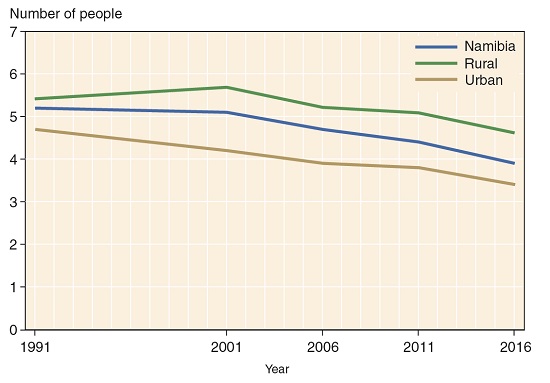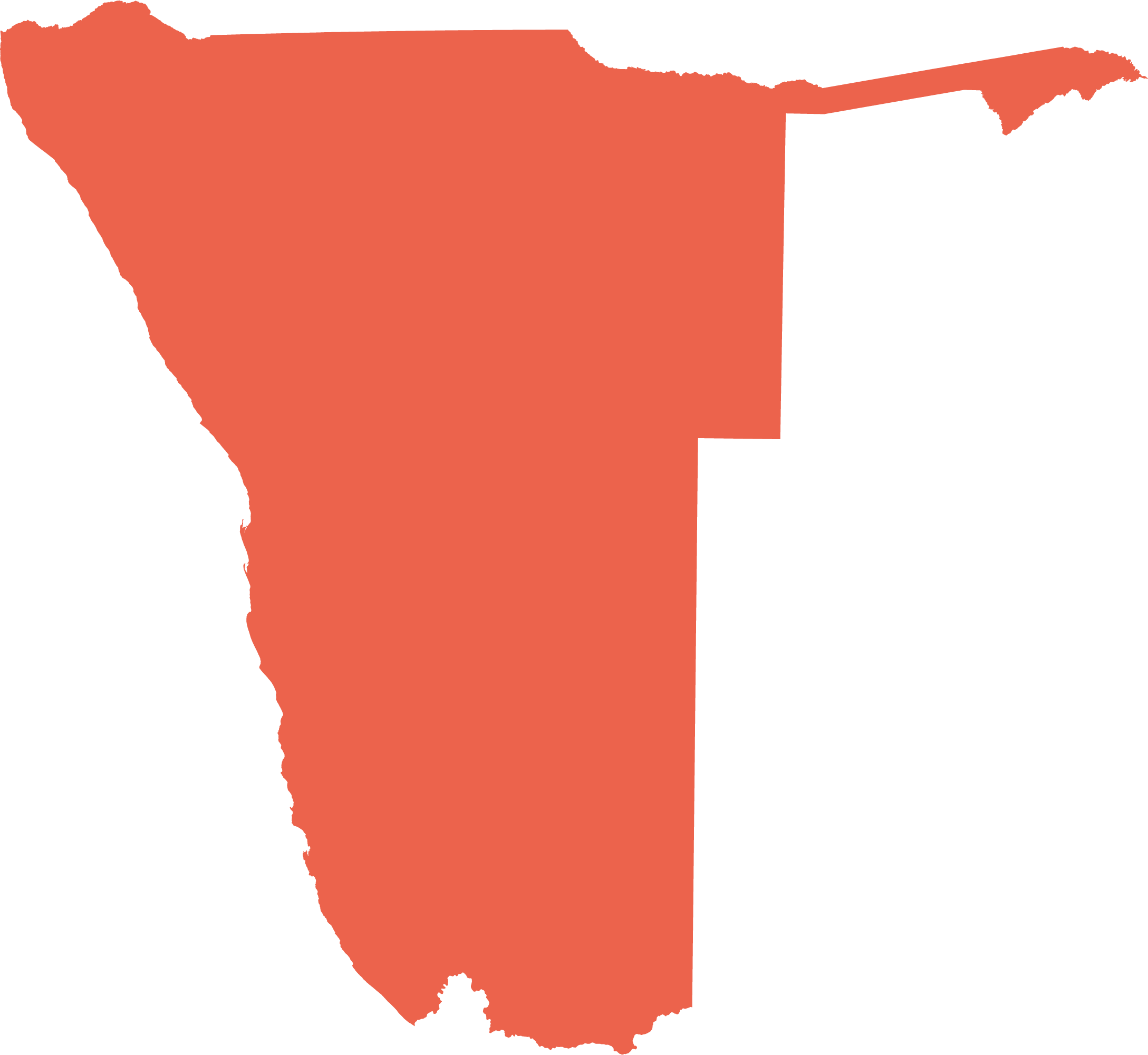Household conditions
The homes of Namibians vary greatly, for instance in their physical structure, size, density, economic resources and access to services. These features are also changing rapidly, especially as increasing numbers of people move from traditional rural homes built of wood, grass and poles into urban shacks. The pages ahead explore variations in Namibian households: the types of housing and sizes, their facilities, and the materials used in their construction. Elsewhere, information is presented on domestic water supplies; the tenure of land on which homes are built; the spacing and location of houses; household wealth, incomes, and poverty; and the types of energy used in houses for lighting and cooking.
9.26 Household size, 1991–201642

On average, households in Namibia have between three and six members, with those in rural areas having one or two more members than urban households. Generally, the residents are family members.
The overall average of 5.2 people in 1991 dropped substantially to 3.9 people in 2016. Much of this reduction is due to the migration of rural family members to urban areas, often causing nuclear families to be split between rural and urban households. Family and household sizes are therefore no longer as equivalent as they were when all family members lived together. Nevertheless, resources flow frequently between family members in urban and rural households.

